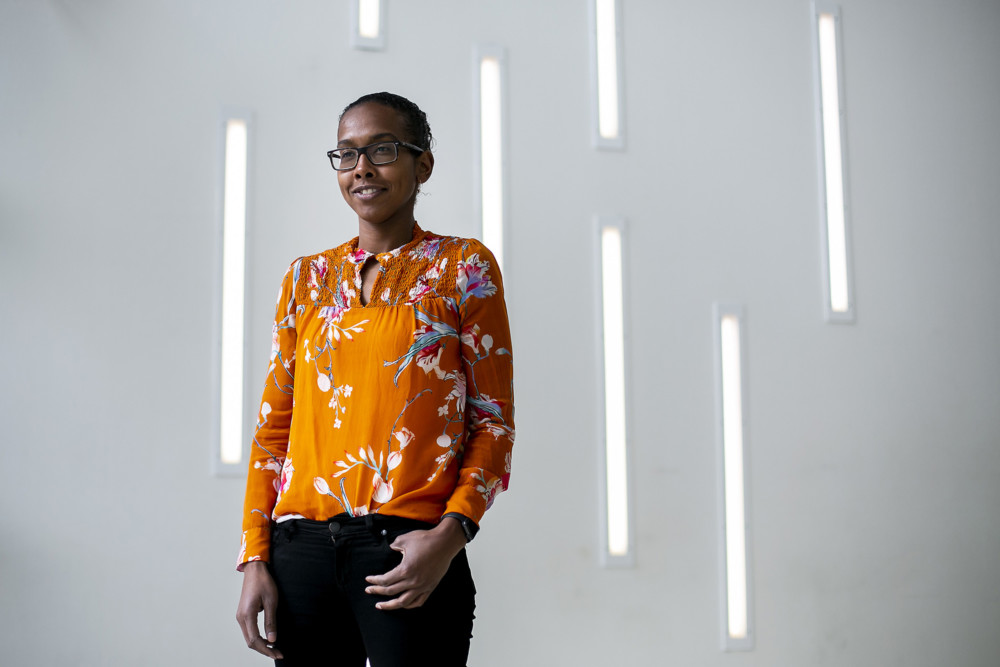By Peter Rowe
The San Diego Union-Tribune
WWR Article Summary (tl;dr) While other researchers have looked at how social media affects teens, Dr. Kara Bagot is the first to compare social media to cannabis.
The San Diego Union-Tribune
This is a teen’s brain on marijuana.
This is a teen’s brain on social media.
See any difference?
In a groundbreaking study, a UCSD psychiatrist is investigating whether social media affects the adolescent brain in the same way as cannabis.
Establishing a link could change how medical professionals view teens’ engagement with Instagram, Snapchat and other social media platforms.
“Psychiatrists don’t recognize excessive social media use as addictive behavior,” said Dr. Kara Bagot, a child psychiatrist and assistant professor in residency at the University of California San Diego. “If it shows similar changes in the activation of the brain’s reward circuitry, then we can develop a treatment model.”
Other researchers have looked at how social media, for better or worse, affects teens. But Bagot’s study is the first to compare social media to cannabis.
“There are studies already that show video games, computer games, social media and increased tech use associated with poor outcomes in physical health, mental health and risk-taking,” she said. “We have to have more conversations about how to responsibly use social media.”
RARE STANCE
Bagot was a high school junior in Los Angeles when AOL introduced Instant Messenger, an early texting system. She was not an avid user.
As an undergraduate at Johns Hopkins, a medical student at the University of Illinois at Chicago and then a resident at Yale, she paid scant attention to online platforms.
That pattern continues. The last time she posted to her Facebook page, George W. Bush was in the White House. She’s never Tweeted, although her Twitter account contains messages from others, with several applauding her December 2018 appearance on “60 Minutes,” discussing adolescent brains and social media.
“I have too much going on in my real life to worry about other people’s lives or some representation of my life,” she said. “We communicate in other ways that are more real and more meaningful.”
Bagot insists she has no bias against social media, but she is concerned about electronic media’s effects on children. The mother of two sons, ages 5 and almost 3, she limits what and when they can watch when it comes to videos and television.
“Now,” she said, “my 5-year-old knows. He doesn’t even ask about watching ‘Paw Patrol’ on a weekday. It just doesn’t happen.”
Hers is a rare stance, Bagot acknowledges: “I had to drag my husband into that.”
In the U.S., it would be virtually impossible to create a social media-free bubble around adolescents.
In a 2018 Pew Research Center survey, 95 percent of teens said they had a smart phone, the device most often used to access social media. Moreover, 89 percent said they were online “almost constantly” or “several times a day.”
Evidence shows that social media usage offers some benefits. While roughly six in 10 teens have experienced cyberbullying, eight in 10 insist that social media makes them feel more connected to friends.
Researchers have noticed that, at the same that social media use among adolescents has risen, teens are delaying getting their drivers’ licenses. Rates of underage use of alcohol, cigarettes and illicit drugs are all falling.
“The thinking is,” Bagot said, “if you are not hanging out with your peers you tend to use drugs less.”
Yet studies also link social media use to depression, insomnia and negative body images. And while postponing some rites of passage (learning to drive, say) may benefit society (and other drivers), Bagot wonders whether this is healthy.
“Kids are increasingly engaging with each other online,” she said, “but they are engaging less with real life.”
FOUR GROUPS
Bagot’s study is a small part of the massive, $300 million Adolescent Brain Cognitive Development (ABCD) initiative, which will track nearly 12,000 children across a decade. The largest study ever conducted on the minds of teenagers, it was launched in 2015 with experts from more than 20 research institutions, including UC San Diego.
When ABCD began, Sandra Brown, UCSD’s vice chancellor for research, predicted that it could “lead to novel approaches to education as well as new types of interventions for common problems emerging during adolescence.”
The “novel approach” Bagot plans to use: scanning teens’ brains as they view images of marijuana, pot paraphernalia and their own Instagram posts. Researchers will alter the latter, adding or subtracting “likes,” to inspire positive or negative emotions.
Looking at images captured by a functional MRI, Bagot’s team will see if images of marijuana and Instagram posts light up the same portion of the brain.
While the 60 adolescent subjects will be evenly divided into four groups, heavy marijuana users, light marijuana users, heavy social media users and light social media users, none will be intoxicated while undergoing brain scans.
“We drug test them before they go in,” Bagot said. “We want them to go in completely sober.”
Subjects, 14- to 18-years-old, are still being recruited and none have yet undergone a brain scan. Bagot’s experiment is funded through the spring, so she plans to finish by the end of the school year.
Education on social media, the professor said, should continue even further.
“We have to teach kids to be good stewards of their own information,” Bagot said, citing instances where old Instagram or Facebook posts of reckless or risque behavior have led to rescinded job offers. “They don’t understand that they are leaving a digital footprint.”
And those footprints sometimes track mud on other people. Often, objectionable posts include more than one person.
“At some point,” Bagot said, “you are responsible for your friends’ information as well.”
Acting responsibly, though, can be difficult if you are high, on cannabis or social media.














































































































































































































































































































































































